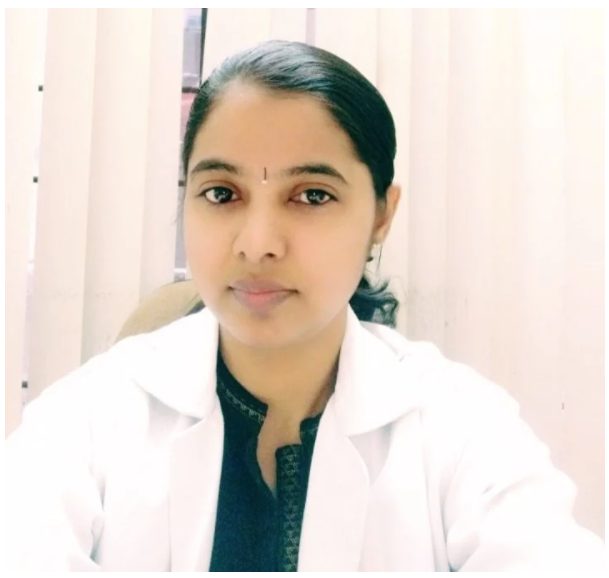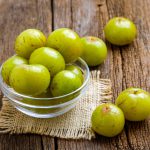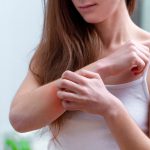Ashwagandha in Sanskrit means “smell of the horse” to correlate it with the strength of…
Read MoreMost of us have found ourselves staring in dismay at a huge pimple in the mirror at some point or the other. Acne is a very common condition – it affects around 95% of those between the ages of 11 and 30! It’s most commonly seen in girls between 14 to 17 years of age and in boys between 16 to 19 years of age.[1][Overview Acne](Acne – NHS (www.nhs.uk)“Overview Acne”). NHS.UK. But it is also seen in middle-aged women and men due to other underlying health issues, unhealthy lifestyle conditions (lack of physical activity, stress), and unhealthy food habits (consumption of processed foods, carbonated drinks, alcohol, smoking). Acne develops when hair follicles beneath your skin get clogged with dead skin cells and oil. While this typically leads to those annoying pimples on your face, acne can develop on your chest, shoulders, and back too. Severe acne can sometimes even leave scars.
In Ayurveda, acne or yuvana pidika, is considered to be a kshudra roga or minor ailment. Hormonal changes, unhealthy food and lifestyle, stress, and various other factors contribute to vitiation of vata and pitta in the body which leads to vitiation of the blood(Rakta) causing acne or pimples. Acne can cause many kinds of pimples or lesions such as
We’ve already seen that acne is caused when hair follicles- which are small pores in your skin out of which individual hairs grow- get blocked. Let’s take a closer look at how this happens.
Your hair follicles are attached to small glands known as sebaceous glands which produce an oily substance called sebum that lubricates your skin and hair. When your sebaceous glands produce excess sebum it combines with dead skin cells and plugs the follicle leading to whiteheads and blackheads. Common bacteria which live on your skin and are ordinarily harmless can then infect your plugged follicles causing cysts, pustules, papules, or nodules.
Some factors can make increase your chances of developing acne:
Hormonal changes can trigger acne. Testosterone, a hormone that increases during puberty, is thought to be behind teenage acne. This hormone may stimulate your sebaceous glands to produce excess sebum.
Hormonal changes experienced by women during their periods or pregnancy may also cause acne outbreaks. As can polycystic ovary syndrome – a hormonal disorder that leads to the development of small cysts in the ovary.
Some medications like steroids, lithium, and even some medicines used for treating epilepsy can trigger acne. Check with your doctor to find out if any medication that you’re using can lead to acne flare-ups.
Research shows that there could be hereditary aspects to acne. You’re more likely to suffer from acne if both your parents had it. And if either or both your parents suffered from adult acne then it increases your chances of getting adult acne too.
It’s also important to keep in mind that factors like stress, humidity and pollution, picking at pimples, scrubbing your skin roughly, and pressure from backpacks, helmets, or tight clothes can make your acne worse.[3][Acne Causes](Acne – Causes – NHS (www.nhs.uk)“Acne Causes”). National Health Service. UK. [4][What causes acne?](What is Acne? Definition & Types | NIAMS (nih.gov)“What causes acne?”). National Institutes of Health.
Traditionally, aloe vera has been valued for its many medicinal properties. It has been used in ayurvedic preparations for a diverse set of conditions from purifying blood and relieving asthma to protecting the liver and improving immunity.
Its bitter taste, cold potency, and gelatinous nature are thought to be helpful in pacifying pitta (associated with the element of fire) dosha, and purifying blood. It is also considered to have bhedana (breaking down) and rechana (purgative) properties. That is, it can break down toxins and make it easier to flush them out of your body. This makes it beneficial for skin disorders.
Due to its healing, cooling, and soothing properties, ayurvedic practitioners also recommend it for a variety of skin conditions such as eczema, minor cuts and bruises, insect stings, and sunburns.[5]Joseph, Baby, and S. Justin Raj. “Pharmacognostic and phytochemical properties of Aloe vera linn an overview.” Int J Pharm Sci Rev Res 4, no. 2 (2010): 106-110.
Important Note
Both the clear gel, obtained by splitting the aloe vera leaf, and the yellowish latex or sap that oozes from the leaf has medicinal benefits. However, the latex has harmful properties. So it’s best to stick to aloe vera gel while using this amazing plant to deal with acne.
In Ayurveda bitter-tasting herbs like aloe vera are considered to be helpful in wound healing. Therefore aloe vera has traditionally been used to treat skin injuries and wounds. Scientific research also shows that aloe gel speeds up wound healing. Now you might be wondering what skin wounds have to do with pimples. Well, a pimple is a tiny wound and scar tissue is formed when your skin tries to repair the wound.[6]Heggers, John P., Ahmet Kucukcelebi, Dmitri Listengarten, Jill Stabenau, Francis Ko, Lyle D. Broemeling, Martin C. Robson, and Wendell D. Winters. “Beneficial effect of Aloe on wound healing in … Continue reading
One study found that the application of aloe vera not only helped with healing but also reduced scar tissue size.[7]Oryan, Ahmad, Adel Mohammadalipour, Ali Moshiri, and Mohammad Reza Tabandeh. “Topical application of Aloe vera accelerated wound healing, modeling, and remodeling: an experimental study.” … Continue reading How does it reduce scar tissue? According to research, aloe vera gel promotes healing by increasing the activity of collagen which is a protein that plays a key role in wound healing. [8]Heggers, John P., Ahmet Kucukcelebi, Dmitri Listengarten, Jill Stabenau, Francis Ko, Lyle D. Broemeling, Martin C. Robson, and Wendell D. Winters. “Beneficial effect of Aloe on wound healing in … Continue reading But that’s not all. It has also been found to change the composition of collagen resulting in the increase of a specific kind of collagen known as Type III collagen.[9]Chithra, Pandarinathan, G. B. Sajithlal, and Gowri Chandrakasan. “Influence of Aloe vera on collagen characteristics in healing dermal wounds in rats.” Molecular and cellular biochemistry … Continue reading Interestingly, reduced Type III collagen has been found to result in excessive scar formation during wound healing.[10]Volk, Susan W., Yanjian Wang, Elizabeth A. Mauldin, Kenneth W. Liechty, and Sherrill L. Adams. “Diminished type III collagen promotes myofibroblast differentiation and increases scar deposition … Continue reading Ayurveda too considers aloe vera to be effective at soothing the skin and reducing scar formation due to its gelatinous or slimy nature.
Acne can lead to hyperpigmentation in some people. This is caused by the production of excess melanin – the pigment which gives our skin color – due to skin inflammation.[11]Davis, Erica C., and Valerie D. Callender. “Postinflammatory hyperpigmentation: a review of the epidemiology, clinical features, and treatment options in skin of color.” The Journal of … Continue reading But aloe vera can help fade those dark spots and scars. A compound present in aloe vera known as aloesin reduces melanin by inhibiting tyrosinase which is an enzyme that’s required for its production.[12]Jones, Ken, Jennifer Hughes, Mei Hong, Q. I. Jia, and Steve Orndorff. “Modulation of melanogenesis by aloesin: a competitive inhibitor of tyrosinase.” Pigment cell research 15, no. 5 … Continue reading
Compounds like acemannan and aloe mannan which are found in aloe vera gel have anti-inflammatory effects and have been found to improve the capacity of the skin to repair itself. Research also indicates that muco-polysaccharides, zinc, and amino acids present in aloe vera help not just in maintaining moisture and the integrity of skin but also, reduce redness. This medicinal plant may help you get rid of the swelling and redness that sometimes accompanies acne.[13]Zhong, Hongyu, Xiang Li, Wanqi Zhang, Xiaoxiao Shen, Yuangang Lu, and Hongli Li. “Efficacy of a New Non-drug Acne Therapy: Aloe Vera Gel Combined With Ultrasound and Soft Mask for the Treatment … Continue reading
The antimicrobial properties of aloe vera are responsible for its ability to fight bacteria associated with acne.[14]Abiya, S. E., B. O. Odiyi, L. R. Falarunu, and N. U. Abiya. “Antimicrobial activity of three medicinal plants against acne-inducing bacteria Propionibacterium acnes.” Brazilian Journal of … Continue reading One study even found that aloe vera gel (50%) along with the topical retinoid tretinoin (0.05%) was significantly more effective at reducing pimples than tretinoin alone. They al0so found that this combination resulted in less severe reddening of the skin due to acne.[15]Hajheydari, Zohreh, Majid Saeedi, Katayoun Morteza-Semnani, and Aida Soltani. “Effect of Aloe vera topical gel combined with tretinoin in treatment of mild and moderate acne vulgaris: a … Continue reading
You’ll find aloe vera powder as well as creams and gels containing aloe vera extracts are available on the market.
You can use aloe vera gel with honey (for taste) to prepare a juice. Ayurvedic practitioners typically recommend taking 10-20 ml of this juice once or twice a day for a duration of 2 weeks. This can be taken on an empty stomach in the morning or evening or before meals. Do check with an ayurvedic doctor before you take aloe vera gel juice as recommendations can vary from person to person depending on individual circumstances.
Acne is one the most common skin conditions in the world but many myths persist about it. Let’s take a look at some of them:
References
| ↑1, ↑2 | [Overview Acne](Acne – NHS (www.nhs.uk)“Overview Acne”). NHS.UK. |
|---|---|
| ↑3 | [Acne Causes](Acne – Causes – NHS (www.nhs.uk)“Acne Causes”). National Health Service. UK. |
| ↑4 | [What causes acne?](What is Acne? Definition & Types | NIAMS (nih.gov)“What causes acne?”). National Institutes of Health. |
| ↑5 | Joseph, Baby, and S. Justin Raj. “Pharmacognostic and phytochemical properties of Aloe vera linn an overview.” Int J Pharm Sci Rev Res 4, no. 2 (2010): 106-110. |
| ↑6, ↑8 | Heggers, John P., Ahmet Kucukcelebi, Dmitri Listengarten, Jill Stabenau, Francis Ko, Lyle D. Broemeling, Martin C. Robson, and Wendell D. Winters. “Beneficial effect of Aloe on wound healing in an excisional wound model.” The Journal of Alternative and Complementary Medicine 2, no. 2 (1996): 271-277. |
| ↑7 | Oryan, Ahmad, Adel Mohammadalipour, Ali Moshiri, and Mohammad Reza Tabandeh. “Topical application of Aloe vera accelerated wound healing, modeling, and remodeling: an experimental study.” Annals of plastic surgery 77, no. 1 (2016): 37-46. |
| ↑9 | Chithra, Pandarinathan, G. B. Sajithlal, and Gowri Chandrakasan. “Influence of Aloe vera on collagen characteristics in healing dermal wounds in rats.” Molecular and cellular biochemistry 181, no. 1 (1998): 71-76. |
| ↑10 | Volk, Susan W., Yanjian Wang, Elizabeth A. Mauldin, Kenneth W. Liechty, and Sherrill L. Adams. “Diminished type III collagen promotes myofibroblast differentiation and increases scar deposition in cutaneous wound healing.” Cells Tissues Organs 194, no. 1 (2011): 25-37. |
| ↑11 | Davis, Erica C., and Valerie D. Callender. “Postinflammatory hyperpigmentation: a review of the epidemiology, clinical features, and treatment options in skin of color.” The Journal of clinical and aesthetic dermatology 3, no. 7 (2010): 20. |
| ↑12 | Jones, Ken, Jennifer Hughes, Mei Hong, Q. I. Jia, and Steve Orndorff. “Modulation of melanogenesis by aloesin: a competitive inhibitor of tyrosinase.” Pigment cell research 15, no. 5 (2002): 335-340. |
| ↑13 | Zhong, Hongyu, Xiang Li, Wanqi Zhang, Xiaoxiao Shen, Yuangang Lu, and Hongli Li. “Efficacy of a New Non-drug Acne Therapy: Aloe Vera Gel Combined With Ultrasound and Soft Mask for the Treatment of Mild to Severe Facial Acne.” Frontiers in Medicine 8 (2021): 732. |
| ↑14 | Abiya, S. E., B. O. Odiyi, L. R. Falarunu, and N. U. Abiya. “Antimicrobial activity of three medicinal plants against acne-inducing bacteria Propionibacterium acnes.” Brazilian Journal of Biological Sciences 5, no. 10 (2018): 277-288. |
| ↑15 | Hajheydari, Zohreh, Majid Saeedi, Katayoun Morteza-Semnani, and Aida Soltani. “Effect of Aloe vera topical gel combined with tretinoin in treatment of mild and moderate acne vulgaris: a randomized, double-blind, prospective trial.” Journal of Dermatological Treatment 25, no. 2 (2014): 123-129. |
| ↑16 | [Allergy testing](https://www.betterhealth.vic.gov.au/health/conditionsandtreatments/allergy-testing “Allergy testing”). Better Health Channel. |
| ↑17 | Vasant. D. Lad. The Complete Book of Ayurvedic Home Remedies. Three Rivers Press. 1998. |
| ↑18 | [Aloe](Aloe – Mayo Clinic“Aloe”). Mayo Clinic. |
| ↑19 | [Aloe Vera](Aloe Vera | NCCIH (nih.gov)“Aloe Vera”). National Institutes of Health. |
| ↑20 | [What Can I Do About Acne?](What Can I Do About Acne? (for Teens) – Nemours Kidshealth“What Can I Do About Acne?”)Nemours Foundation. |


Dr. Manjula has 12 years of experience in the field of Ayurveda and worked as a Consultant and General Physician for over 5 years before starting her private practice. In addition to BAMS, she also has an Advanced Diploma in Clinical Research and is trained in Panchkarma. She is an expert at diagnosis of the root cause and planning effective treatment for multiple issues.

Ashwagandha in Sanskrit means “smell of the horse” to correlate it with the strength of…
Read More
Pimples - we’ve all had them and we all hate them. And if you’ve ever…
Read More
Don’t all of us want healthy glowing skin? And while there is a ton of…
Read More
Most of us have experienced skin irritations at some point or the other. When the…
Read More